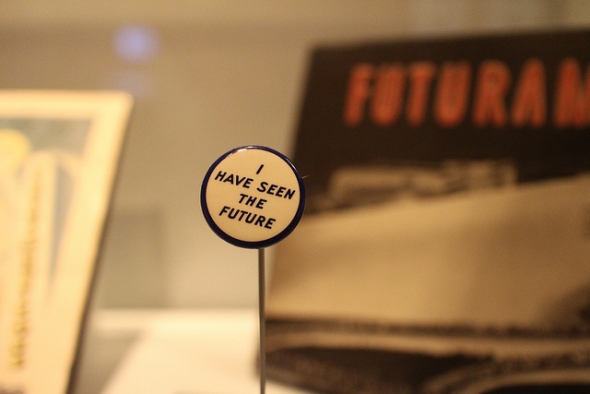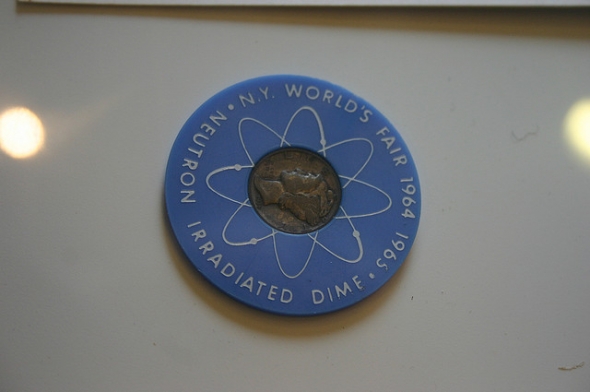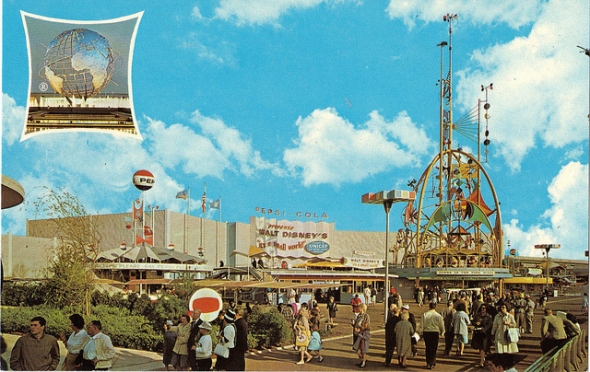The possible inspiration for Back to the Future
Image: Guerrilla Features | Jason Tester, Flickr
In Back to the Future, Marty McFly gets the keys to a DeLorean that lets him travel through time. Coincidentally or not, that’s eerily similar to the most straightforward of Disney’s four exhibits. The Ford Motor Company pavilion needed to highlight the majesty of 1960s Ford vehicles, something that history wound up doing for them. Many of the classic vehicle designs of all-time rode off the Detroit assembly line in those days, but the burgeoning wealth of the American middle class meant that they had a massive volume of potential customers to target. Their event had to showcase all the reasons a person should consider buying a Ford.
Disney identified what they wanted to do early in the pitch process. The beauty of a Ford sports car from that time period was that its design represented everything great about the American automobile. The Disney team knew precisely how they’d frame their story. They would stick people in a Ford sports car and take them on a tour of history. And if the General Electric exhibition above didn’t remind you enough of Spaceship Earth, Ford Magic Skyway definitely will.
Again employing state of the art animatronics, Disney designed this journey to show the evolution of mankind from the days of the dinosaurs to the space-based future everyone envisioned in the early 1960s. People would get in their Ford cars and ride them down the tracks millions of years into the past. Ford’s pointed request was for Disney to use new the new models of their vehicles straight off the manufacturing line to showcase their sophistication and sex appeal. Who could turn that down?
Image: Ryan Somma, Flickr (license)
Imagineers had relatively free reign on this project, because Uncle Walt himself wasn’t involved. He was extremely hands-on with the other Disney exhibits, and he didn’t want to spread himself too thin by calling the shots on this one as well. All he requested was that his employees challenge themselves by making the most realistic scenery imaginable. The company’s illustrators spent months working on detailed dioramas that they could translate into dinosaur-sized audio-animatronics.
The surprising difficulty with the Ford Magic Skyway involved the cars. Disney had planned to drive people through the set pieces in a standard way, but the introduction of street-ready vehicles added complexity. In the process, they led to an invention with far-reaching ramifications. In order to honor Ford’s request, Imagineers designed a track chain that could space the cars a set distance apart from one another. Then, they could move the entire chain and thereby push the Fords down the line at a set pace.
If this sounds familiar to you, it should. It’s the underlying mechanic of every Omnimover in existence. It’s also the basis for the Peoplemover, your favorite ride when you need a break at Walt Disney World. While the Ford Magic Skyway itself became the only Disney exhibit at the World’s Fair that wasn’t transferred in totality to a theme park, the specifics of its build directly impacted innumerable Disney rides for decades afterward. It was the forerunner of one of their most important technologies, track-based ride vehicles. It was also the most popular Disney attraction at the World’s Fair and the second most popular overall.
Mommie Dearest and the Pepsi Generation
Image: Castles, Capes & Clones, Flickr (license)
All the babies born during and in the wake of World War II represented an untapped market for clever advertisers. Pepsi-Cola described these war babies as possessing "conviction that what lay ahead was better than what lay behind." They wanted to sell as many bottled colas as possible to the youth of America, indoctrinating them as lifetime customers of their brand of beverage. They eventually named the group the Pepsi Generation, and the overlords of one of this powerful corporation understood something about the target audience. The Pepsi Generation would expect all the cool companies to provide presentations at the World’s Fair.
Pepsi’s guidelines proved to be a challenge. They were working with UNICEF to foster the perception that Pepsi thought globally decades before that business practice became prevalent. Pepsi requested that their pavilion’s featured attraction offer a "salute to UNICEF (the United Nations Children’s Fund) and all the world's children." Several companies pitched to them, and each one received a sound rejection in reply. Creating a globally celebratory campaign during the Cold War proved unwieldy.
Pepsi executives were ready to cancel their pavilion and pass on the 1964 World’s Fair entirely when 1963 rolled around. Oddly, Walt Disney’s connections in the movie industry rather than his reputation as the genius behind Disneyland led to an unexpected union. If you’ve ever watched Mommie Dearest, you are familiar with the tabloid-fueled life of Joan Crawford, the Academy Award-winning actress. In 1955, Crawford married the CEO of Pepsi, whose death in 1959 left her a widow.
Pepsi executives weren’t interested in an actress sitting on their Board of Directors, but Crawford’s legendary force of will caused it to happen anyway. Most of her advice about the company was ignored during her 14-year tenure on the board, but there was one important exception. As Pepsi prepared to sit out the upcoming World’s Fair, Crawford firmly suggested that her peers meet with Walt Disney, a man she believed was capable of anything.




Comments
I love this story, along worn many others on this site. I am only a little bothered that small world is treated as annoying. The world in a childlike state of peace an bliss is an amazing dream. What could be a better signature experience for Disney?
Excellent piece. Thank you.